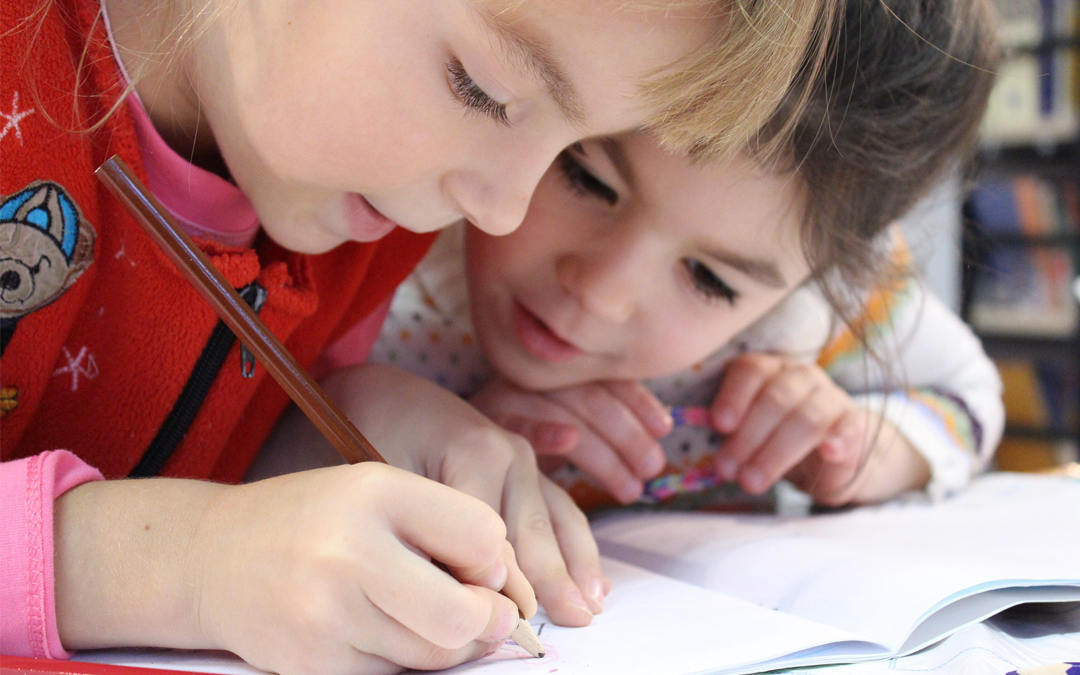In the late 80s, I was a middle school kid who spent 10 minutes a night working on weekly vocabulary words for my English class. I would memorize words and definitions to the tune of common songs. I started with easy stuff such as “You Are My Sunshine,” and when I ran out of basic songs over the course of a semester, I would put on my parents old vinyl records (Beatles or Simon and Garfunkle) and learn the vocabulary words to a more interesting tune. I took my “exam” at the end of the week, and all I needed was to recall the tunes I’d used to study vocabulary words. Amazingly, the definitions just spilled onto my page and I came home with near perfect scores each time. Looking back, this was an example of learning through an aural or auditory method.
As a parent with a school age child, you’ve likely heard about different learning styles. What does this mean? The most basic definition I can give you is that every person has a preferred way to learn something new; it’s the way that each person best takes in and retains new information and concepts.
You’re likely aware of your child’s preferences, and even if you haven’t specifically thought about it, you have probably noticed that they need to move when they’re learning, or they really latch onto images, or perhaps they’ve always had a knack for music and know every single word to certain songs.
Depending on who you consult, there are a number of styles. Some experts trim the list to three, others have categorized four, seven, and eight learning styles. Today, I’ll focus on three of the most common styles that you find in nearly every learning style theory.
It’s important to learn about methods suited to your child’s learning style, and equally important to remember a few things:
- Your child can fall into more than one category.
- If your child leans heavily toward one style, don’t automatically exclude methods that have not been labeled as “best” for your child’s learning style. There are benefits to other methods and your human is always changing!
- Your child is, well, human. Expect that they might change as they mature and grow!
As you get back into the groove of the upcoming school year, here are a few ways to support your child’s learning style. And as always, remember that Hoot teachers are familiar with the need for individualized instruction, and we love to know if there is a style that your child seems to prefer.
Three Types of Learning Styles
Kinesthetic/Physical Learners prefer a lot of movement to process what they’re learning. Set aside extra time when reading so your child can act out the story, or encourage them to doodle, or draw along as you read aloud, or have them create a diorama of their favorite scene. Plan ahead to allow for smaller chunks of reading (or homework) that are punctuated with moving breaks.
Visual Learners learn most easily through viewing, but may also be inclined to draw their favourite scene, a map from the story, or consider having them create a movie poster for their favourite book. They love pictures and many chapter books today have an image at the start of a new chapter that can help with predictions.
Aural/Auditory Learners benefit by reading aloud and will enjoy different styles of speaking (accents, changing your tone of voice, etc.) when listening to you read aloud. Listening to lyric free music in the background can also support their natural style of learning, and they’ll likely enjoy discussing a book with you, and be open to joining or starting a book club with friends.
Personalizing Lessons
One of the reasons I enjoy Hoot is that teachers work with children in a very intentional one-on-one setting. Each child is radically different. Some of them process the material verbally with me, connecting their prior knowledge with the new discoveries from our session. Sometimes a child really connects with the images on the page. I use this as a launch point for deeper discussion to build their comprehension. Another student might bring a special stuffed animal to the session and I might ask them to act out a portion of the story with that special stuffed friend. Each of these examples is a highly personalized way that our readers absorb and process information during a Hoot session.
I encourage you to take the time to observe the ways your child learns best and get creative with your approach at home! Having trouble sorting it all out? Ask their classroom teacher what observations they have about your child’s learning style and take a cue from an expert.
Have questions about how we can integrate more of your child’s learning style during a Hoot session? Just let us know, and I guarantee we have an idea tucked up one of our sleeves!
